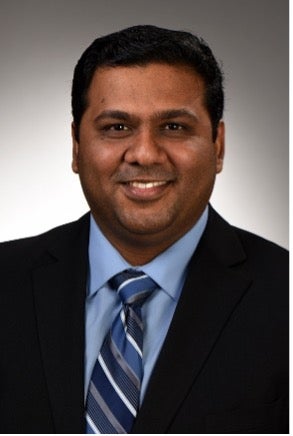
Suvendra Vijayan, MS, MPH, BDS, assistant professor in the School of Dental Medicine Department of Diagnostic Sciences and director of 3D printing and advanced technologies in the Offices of Academic and Clinical Affairs, talks about how new technology at Pitt Dental Medicine is making a difference to students and faculty.
How is the School of Dental Medicine’s commitment to implementing new technology enhancing teaching opportunities for faculty and students?
The University of Pittsburgh School of Dental Medicine has always been a pioneer in the use of technology in dental education. With Dean Marnie Oakley at the helm, we are pushing forward on integrating newer technologies to enhance learning opportunities for both students and faculty.
3D Printing, Cone-beam CT and Digital Dentistry
Our program already is well underway in using digital dentistry for predoctoral students and residents. We use intraoral sensors and cone-beam computed tomography (CBCT) for diagnostic purposes. We use intraoral scanners and computer-aided design/computer-aided manufacturing technologies to fabricate a variety of digital prostheses for patients. We already have incorporated 3D printing for residents, who use it on a regular basis for printing diagnostic casts, implant surgical guides and surgical models of patients that also use CBCT scans. These processes have tremendous value in patient treatment plans, reducing recovery time and enhancing quality of care.
The 3D printers in the Pitt Hillman Library Open Lab provide an opportunity for students to create and print fun 3D models to spark their interest in 3D printing. The Digital Dentistry Club, a student-run organization for which I am the faculty advisor, provides great resources and training for students to do this. The 3D printing lab at Pitt Dental Medicine provides opportunities for students to 3D print anatomy training models and innovative 3D prints—some of which are used on a regular basis in clinics and preclinical labs.
Implementation of AI
Artificial intelligence (AI) tools have taken health care and education by storm. With the advent of generative AI tools like ChatGPT, we are working with students and faculty to determine how to use these tools to enhance their learning and teaching. Other AI tools for caries detection and periodontal bone charting also are being evaluated for future school-wide implementation.
Can you tell alumni more about your vision for new digital labs being built at the School of Dental Medicine?
The new digital labs are core pieces of our digital dentistry pathways for students. These state-of-the-art design studios will provide students and residents with cutting-edge software and training in the use of this software. The labs also will provide the newest technologies for milling and 3D printing for all dental prostheses for the patients. Our vision for these studios includes 3D printing temporary crowns to complete dentures, and much more. With the use of our metal 3D printer, we will be researching new and innovative ways to improve and customize dental prosthesis devices.
These centralized labs also will provide the space for interdisciplinary engagement and research. Too often innovation in one area is not visible to other disciplines. Having a centralized area will foster these interdisciplinary engagements, which will lead to better research and commercialization opportunities for Pitt Dental Medicine.
Faculty and alumni also will have an opportunity to train with these tools as part of our continuing education offerings in the future. This will provide an opportunity for practitioners to evaluate and use these tools before implementing them in their practices.
In your opinion, how can school-based technology improvements benefit incoming classes of dental medicine students?
The incoming class of dental medicine students will have access to some of the latest and best dental technology tools.
Using patients’ 3D printed models, students might be able to practice before treating actual patients. Advanced simulation technology with virtual reality and haptics will allow students to practice in a controlled environment that simulates real-life case scenarios.
Online tools like Top Hat®, Canvas® and ExamSoft® allow students opportunities for self-assessment and provide faculty with tools to create an active learning environment in their classrooms. Cautious use of generative AI can provide high-quality questions for both students and faculty to use.
Improved network connectivity and providing all students with tools, such as laptops or tablets, to access it will provide an even learning field for all students. Online lecture capture tools like Panopto and Zoom offer students virtually unlimited access to faculty lectures.
These technology tools will streamline and improve patient care tremendously. Electronic health record tools like axiUm and MiPACS offer great value in storing, retrieving and cataloging patient data. They are of great use in patient care, research and teaching. They streamline administrative tasks, patient management and clinical documentation, allowing students to focus more on their learning and patient care.
By teaching and using these tools, we are preparing future-ready dental practitioners who will have the skills and knowledge to use current technologies and who can critically evaluate new technologies and incorporate them in their practice for the betterment of patient care.

